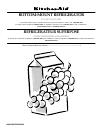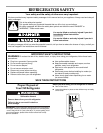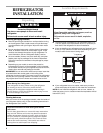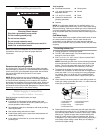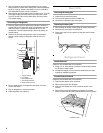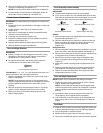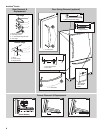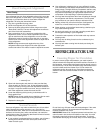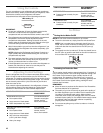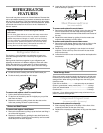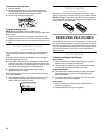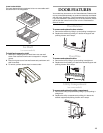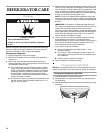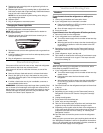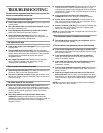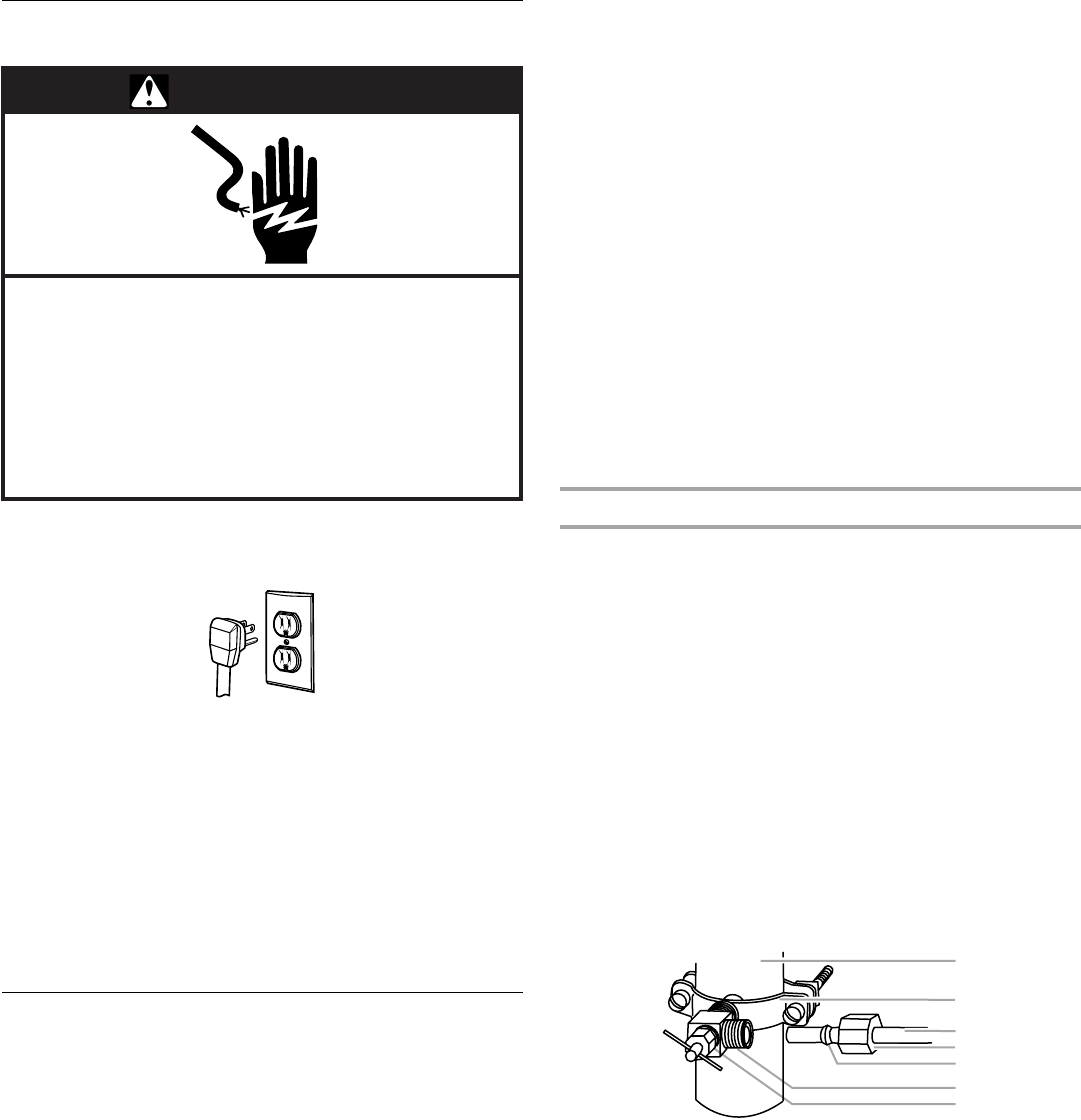
5
Electrical Requirements
Before you move your refrigerator into its final location, it is
important to make sure you have the proper electrical
connection:
Recommended grounding method
A 115 Volt, 60 Hz., AC only 15 or 20 ampere fused, grounded
electrical supply is required. It is recommended that a separate
circuit serving only your refrigerator be provided. Use an outlet
that cannot be turned off by a switch. Do not use an
extension cord.
NOTE: Before performing any type of installation, cleaning, or
removing a light bulb, turn the control (Thermostat, Refrigerator
or Freezer Control depending on the model) to OFF and then
disconnect the refrigerator from the electrical source. When you
are finished, reconnect the refrigerator to the electrical source
and reset the control (Thermostat, Refrigerator or Freezer Control
depending on the model) to the desired setting.
Water Supply Connection
(For Automatic Ice Maker - Accessory)
Read all directions carefully before you begin.
IMPORTANT:
■ If operating the refrigerator before installing the water
connection, turn ice maker to the OFF position (arm up) to
prevent operation without water.
■ All installations must be in accordance with local plumbing
code requirements.
■ Use copper tubing and check for leaks.
■ Install copper tubing only in areas where temperatures will
remain above freezing.
■ It may take up to 24 hours for your ice maker to begin
producing ice.
Tools required:
NOTE: Your refrigerator dealer has a kit available with a ¹⁄₄ in.
(6.35 mm) saddle-type shutoff valve, a union, and copper tubing.
Before purchasing, make sure a saddle-type valve complies with
your local plumbing codes. Do not use a piercing-type or ³⁄₁₆ in.
(4.76 mm) saddle valve which reduces water flow and clogs more
easily.
Cold Water Supply
The ice maker water valve contains a flow washer which is used
as a water pressure regulator. The ice maker needs to be
connected to a cold water line with water pressure between
20 and 120 psi (140-827 kPa). If a problem occurs, call your utility
company.
Connecting to Water Line
1. Unplug refrigerator or disconnect power.
2. Turn OFF main water supply. Turn ON nearest faucet long
enough to clear line of water.
3. Find a ¹⁄₂ in. to 1¹⁄₄ in. (12.7 mm to 3.18 mm) vertical COLD
water pipe near the refrigerator.
NOTE: Horizontal pipe will work, but the following procedure
must be followed: Drill on the top side of the pipe, not the
bottom. This will help keep water away from the drill. This
also keeps normal sediment from collecting in the valve.
4. To determine the length of copper tubing you will need,
measure from connection on lower left rear of refrigerator to
water pipe. Add 7 ft. (2.1 m) to allow for moving refrigerator
for cleaning. Use ¹⁄₄ in. (6.35 mm) O.D. (outside diameter)
copper tubing. Be sure both ends of copper tubing are cut
square.
5. Use a hammer and center punch to mark drilling location on
water pipe. Using a grounded drill, drill a ¹⁄₄ in. hole in the cold
water pipe you have selected.
6. Fasten shutoff valve to cold water pipe with pipe clamp. Be
sure outlet end is solidly in the ¹⁄₄ in. drilled hole in the water
pipe and that rubber washer is under the pipe clamp. Tighten
packing nut. Tighten the pipe clamp screws carefully and
evenly so rubber washer makes a watertight seal. Do not
overtighten or you may crush the copper tubing, especially if
soft (coiled) copper tubing is used. Now you are ready to
connect the copper tubing.
WARNING
Electrical Shock Hazard
Plug into a grounded 3 prong outlet.
Failure to follow these instructions can result in
death, fire, or electrical shock.
Do not use an extension cord.
Do not use an adapter.
Do not remove ground prong.
■ Flat-blade screwdriver ■ Center punch
■ ¹⁄₂ in. open-end wrench or
adjustable wrench
■ Bucket
■ ¹⁄₄ in. and ⁵⁄₁₆ in. drill bit ■ Towel
■ Hand drill or electric drill
(properly grounded)
■ Gloves
■ Hammer
1. Cold Water Pipe
2. Pipe Clamp
3. Copper Tubing
4. Compression Nut
5. Compression Sleeve
6. Shutoff Valve
7. Packing Nut
1
2
3
4
5
6
7



